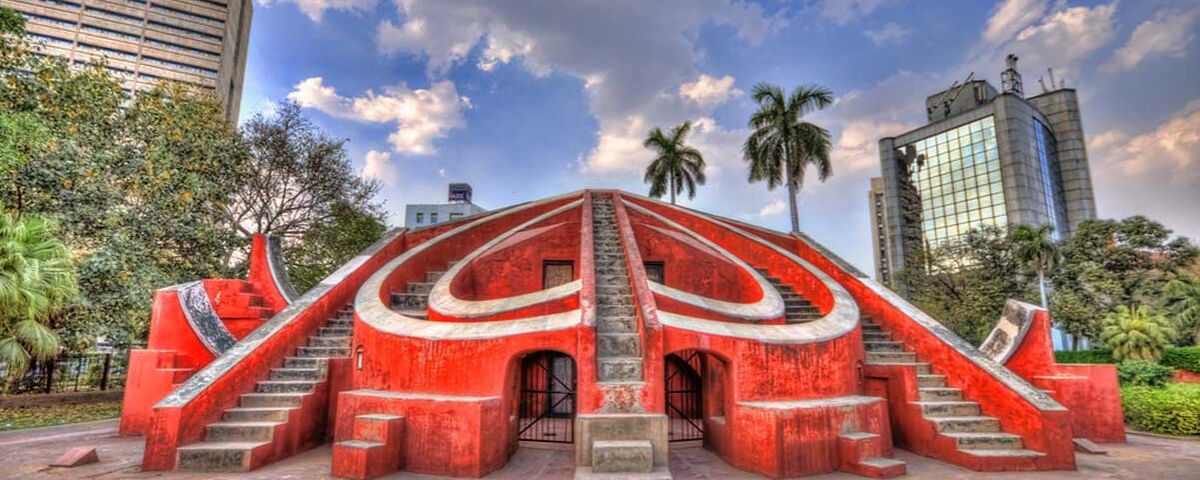- Have Any Question ?
- +91-9929358785
- 01414054824
- Info@thepinkcityholidays.com
Jantar Mantar: About, Time, History, Activities, Price

Hawa Mahal: About, Time, History, Architecture, Price
March 1, 2023
Albert Hall Museum: About, Time, History, Entry Fee, and more
March 1, 2023The Pink City of India always impressed art and craft lovers from across the globe. The city is not just home to historical monuments, forts, and palaces, but also something that can be marveled at. One such iconic attraction in Jaipur is Jantar Mantar, an Astronomical Observatory.
Who doesn’t know about Jantar Mantar? There are plenty of historical monuments in India’s famous destinations with the name Jantar Mantar, like Delhi, Varanasi, Ujjain, Mathura, and Jaipur. But the largest astronomical observatory in India is in Jaipur and therefore it is the most explored by travellers.
Built by the Rajput King Sawai Jai Singh II in 1734, Jantar Mantar in Jaipur is an astronomical observatory that features the world’s largest stone sundial. The observatory is also a UNESCO World Heritage Site that every tourist must add to their Jaipur sightseeing tour. Here’s all that you’ll ever need to know about the observatory before visiting it.
History:
Jantar Mantar in Jaipur is a fascinating astronomical observatory located in the heart of the city. It is one of the largest observatories in the world, comprising interesting sandstone structures that help to interpret the position of celestial bodies and calculate the local time. Reckoned a UNESCO World Heritage Site, Jantar Mantar in Jaipur attracts architects, mathematicians, geographers, and historians.
During the reign of Maharaja Sawai Jai Singh II, he was commissioned by Emperor Muhammad Shah to rectify astronomical calculations in Islamic Zij tables. To accomplish this task, he gathered astronomical data from European and Persian nations and studied and interpreted the same. After extensive research and study of all the gathered data, Maharaja Sawai Jai Singh II constructed stone instruments to determine the position of planetary bodies and calculate time.
Major tourist attractions within Jantar Mantar:
Within the observatory, there are 19 architectural instruments to measure the position and distances of extraterrestrial bodies. These instruments are basically stone structures, depicting interesting geometric shapes. It is suggested to take a local tour of the monument for an understanding of the instruments and how they work.
- Vrihat Samrat Yantra – A gigantic sundial that is 27 m long and renowned as the tallest sundial in the world.
- Laghu Samrat Yantra – The shadow of the triangular wall of the yantra tells the local time.
- Ram Yantra – The instrument comprises a pair of tube-shaped structures, open to the sky.
- Jaya Prakash Yantra – This yantra consists of two hemispherical bowls-like sundials with graded marble slabs.
- Chakra Yantra – It consists of four semi-circular arcs, on which the gnomon throws a shadow.
- Digamsa – It is a pillar in the middle of two concentric outer circles which helps to predict the sunrise and sunset timings.
- Nadivalaya – A pair of circular plates, facing north and south, Nadivalaya represents the two hemispheres of Earth.
- Karnti Vritya – It is a special instrument, used to measure the solar sign of the sun in the daytime.
Best time to visit Jantar Mantar:
The best time of the day to visit Jantar Mantar is noon. During the midday, the Sun is vertically above and it is easy to understand the process of interpretation of the readings of each instrument.
Timings:
The monument remains open from 9:00 am to 4:30 pm on all seven days of the week. Generally, one can see the whole of Jantar Mantar in 30 to 45 minutes.
Entry Fees:
Jantar Mantar's entry fee is INR Rs 50/- only for Indians per person and INR Rs 200/- only for foreigners per person. The entry cost for students is INR Rs 15/- per person for Indians and INR Rs 25/- per person for international students.
Conclusion:
Besides Jantar Mantar, Jaipur has many historical wonders that you must include in your Jaipur tour package. Have a remarkable vacation in Jaipur during an amazing honeymoon and family trip. So, travel soon to Jaipur.





